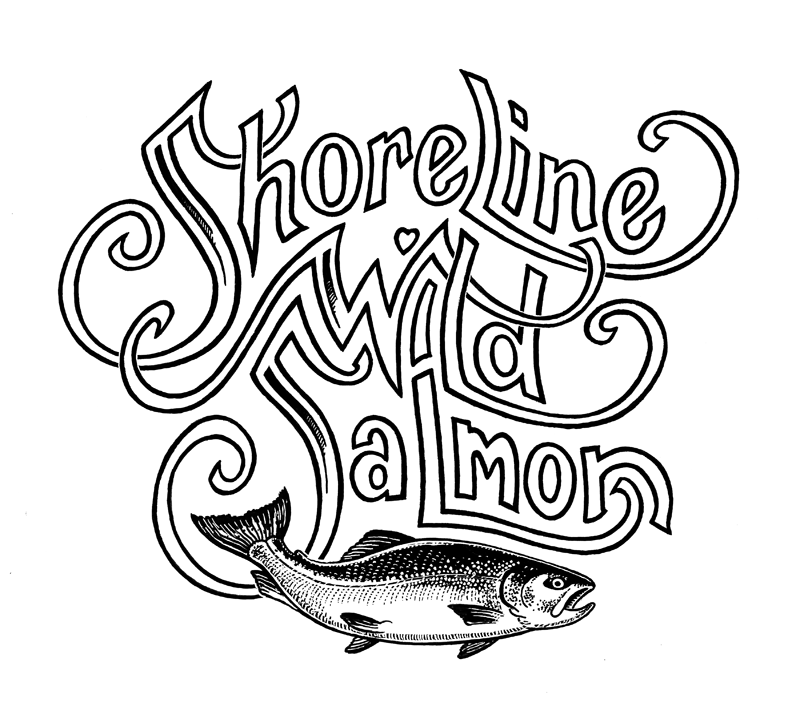Is Wild Alaska Salmon High in Mercury?
What is mercury?
Nearly all fish contain some level of mercury, defined by Alaska’s Department of Health and Social Services (DHSS) as a toxic element that occurs naturally in the earth’s crust. According to Healthline, people can be exposed to mercury in a number of ways, such as breathing in mercury vapors during industrial work, or by eating fish that has absorbed low concentrations of mercury due to water pollution. Mercury can cause serious health problems when it reaches certain levels in your body.
Some types of fish can contain higher levels of mercury than others. Healthline reports that overall, larger and longer-lived fish tend to contain the most mercury such as: shark, swordfish, tuna, marlin, king mackerel, tilefish from the Gulf of Mexico, and northern pike. Still, Healthline suggests that nutritional benefits of fish likely outweigh the risks from mercury exposure, as long as the consumption of high-mercury fish is moderated.
Healthline states that at-risk populations such as pregnant women, breastfeeding mothers, and young children have a higher risk of problems related to mercury exposure. Still, seafood can be a great source of protein, iron, zinc, and omega-3s, and Mayo Clinic recommends following the Food and Drug Administration (FDA) dietary guidelines for Americans that suggest pregnant women "eat at least 8 and up to 12 ounces of a variety of seafood low in mercury a week.”
What does that mean for consumers of wild Alaska seafood?
Alaskan seafood is an extremely valuable natural resource. According to the Alaska Department of Environmental Conservation (DEC), over 50% of seafood processed in the U.S. comes from Alaskan waters. The DEC established a Fish Monitoring Program “to determine the presence of bioaccumulative contaminants in Alaska's fishes and monitor spatial and temporal trends in the levels of those contaminants in fish tissue.”
Thousands of fish from all over the state, primarily in coastal marine waters, are tested as part of this ongoing Fish Monitoring Program to observe mercury content among fish sampled from Alaska waters. Fish are also collected from streams, rivers, and lakes that are important for subsistence and sport fishermen. The data from this program allows regulators, scientists, and the public to make informed decisions about fish consumption and the impact of environmental contaminants on commercial and subsistence fisheries in the state of Alaska.
This program has determined that all species of wild Alaska salmon have very low levels of mercury. In addition, according to the DHSS, state health officials are actively monitoring Alaska residents and have not found any cases of unsafe mercury exposures resulting from consumption of Alaska fish. Alaska Salmon is even rated as a “best choice” by the Environmental Defense Fund for its low mercury content and high levels of omega-3 fatty acids.
What about other contaminants?
Persistent Organic Pollutants (POPs) can also be a concern for consumers. POPS are defined by the World Health Organization as chemicals of global concern due to their potential for long-range transport, persistence in the environment, ability to bio-magnify and bio-accumulate in ecosystems, as well as their significant negative effects on human health and the environment. Once POPs have gotten into an animal or human, they can be absorbed by fatty tissues and stay there for prolonged periods of time, instead of being metabolized or excreted from the body. According to the DHSS, “All Alaskan fish species tested have either non-detectible or very low concentrations of POPs. No POPs were detected at levels of health concern in any fish species tested, and no limitations in Alaska fish consumption are warranted or recommended based on POP levels.”
On the other hand, Cleveland Clinic reports that polychlorinated biphenyl, which is one type of POP, is found at levels five to ten times higher in farmed fish than in wild fish. So, if you’re looking to eat salmon for the health benefits and without the risk, we recommend sticking with salmon that is wild caught from Alaska. You can read more about the benefits and risks of farmed salmon in this article.
What about contaminants from Fukushima?
As part of a large monitoring effort in the North Pacific, Alaskan fish samples have been collected and tested for a number of contaminants. According to the Alaska Division of Environmental Health, no detectable levels have been found in any sample. You can read more about these studies here.
The Bottom Line
It’s all good news for Alaska salmon lovers. Alaska Salmon is the healthiest, cleanest catch around! All species of wild Alaska salmon have very low levels of mercury and other contaminants like POPs, making it a great go-to option for safe, sustainable seafood.
Shoreline Wild Salmon provides excellent options for high quality wild Alaska Salmon and Seafood and ships in 5 lb, 10 lb, or 20 lb increments, right to your door. Check out all of Shoreline’s offerings by clicking the button below.

